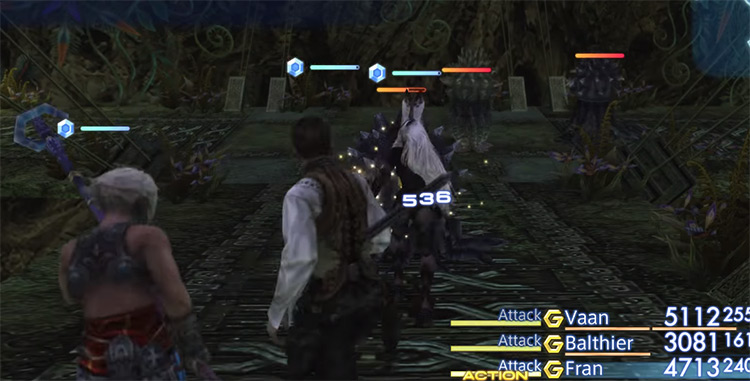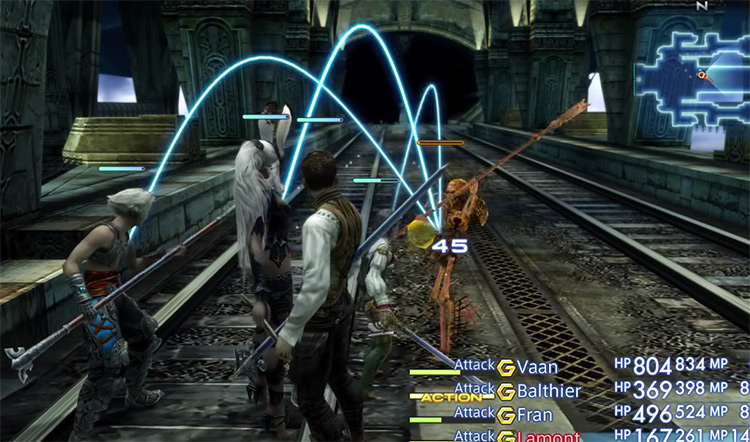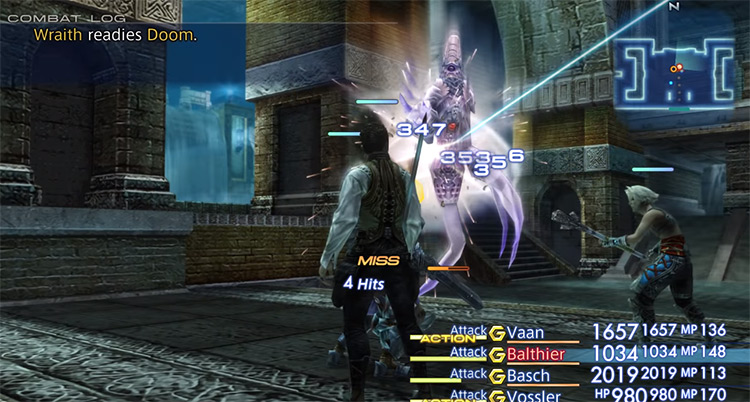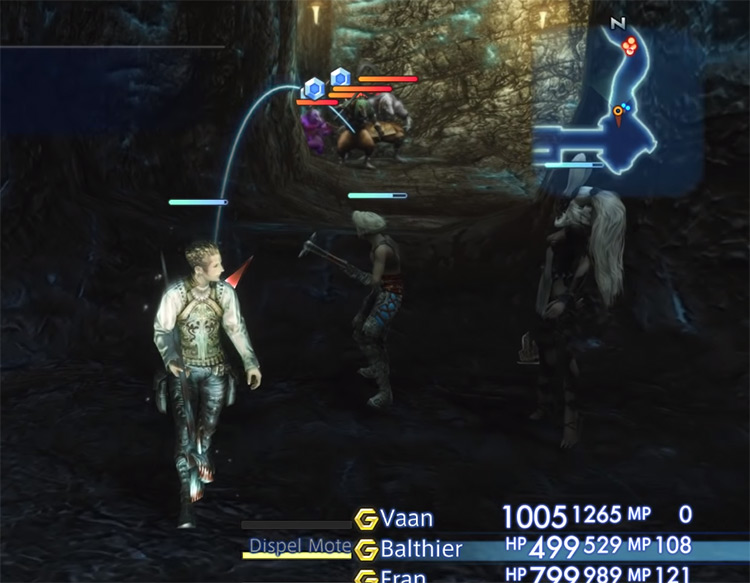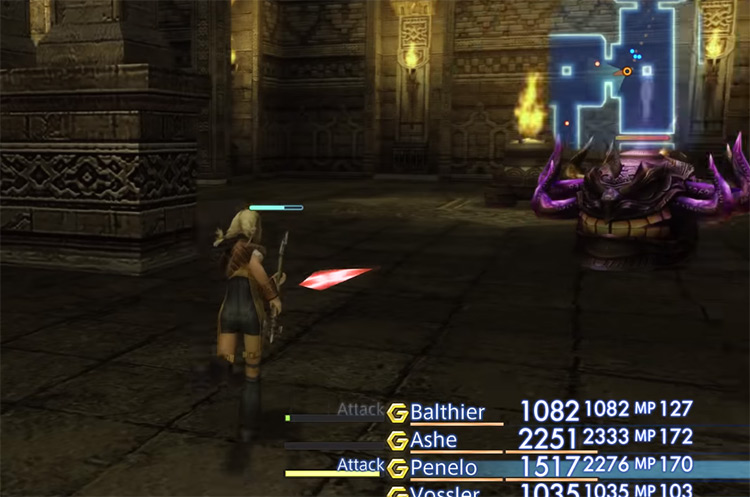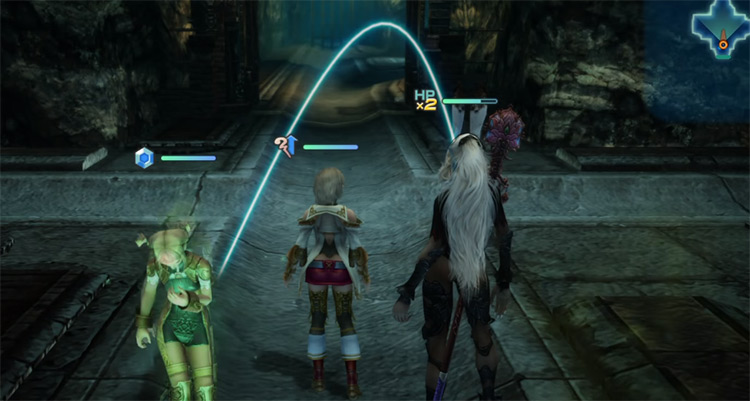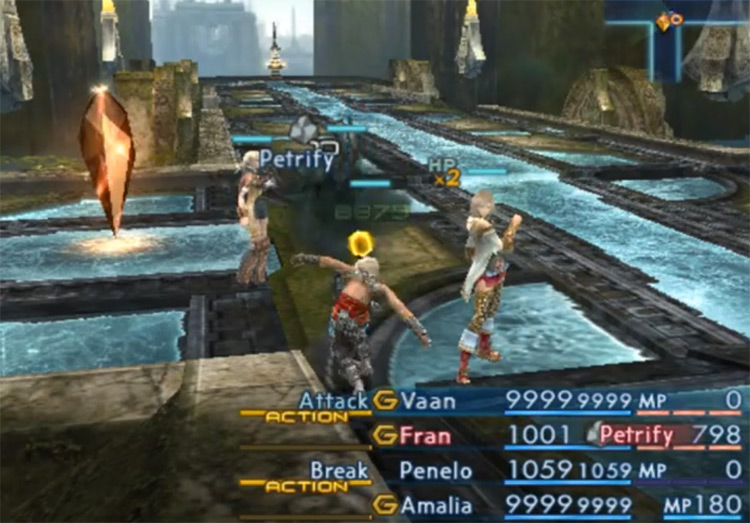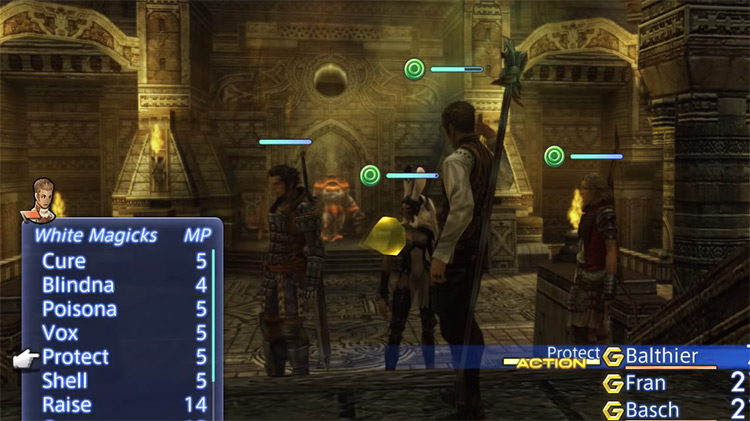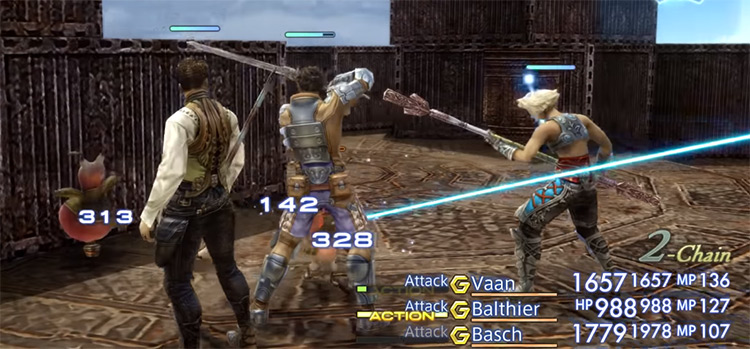Battles and exploration were no longer separate screens, and as such, party management required a much more attentive hand. Fortunately, you’re presented with the perfect tool for the job: Gambits! Gambits are assignable, conditional commands that make party members do things you want them to do, without having to babysit them. Think of them like writing and running a script that tells your party members what to do based on certain situations. But there are hundreds of gambits, so let’s discuss the most useful ones worth getting.
11. Foe: Lowest HP
Defeating the enemy is the entire point of battle. This can be done through a variety of means, but one of the simplest ways is to target the weakest enemy and then systematically clear the field. This Gambit orders the crew to prey on the weak – and to great effect. This is extra effective when small-time creatures like bats decide to join in the melee.
10. Foe: Party Leader’s Target
It’s not uncommon for the battlefield to get really crowded. More often than not, there’s one or two specific enemies in the mess that cause extra problems to the group, and can be tricky to get to – especially if it’s early yet and your team’s gambits aren’t too fleshed out. “Foe: Party Leader’s Target” tells the group to gang up on whomever the leader is engaged with, making it easy to get rid of troublemakers and rare creatures that tend to run away.
9. Foe: Flying
Flying enemies are a serious inconvenience to anybody who can’t use magic or bow-type weapons. Sometimes this is made even more annoying when a flyer comes with a pack of otherwise earthbound enemies. This gambit makes sure the party members who can deal with flying enemies do so, picking them off while everybody else manages the ground.
8. Foe: Undead
Ivalice has an unusually high number of undead creatures. Zombies, ghosts, skeletons, wraiths… if you can think of it, it’s probably here. While these enemies aren’t really too much trouble with swords and magic, the easiest way to dispatch undead creatures (especially large groups of them) is through healing or fire magic. Using the “Foe: Undead” gambit to tell a member to apply a large Curaga or Firaga to an undead posse is a super-efficient way to clear the room – or to deal severe damage to any single-target big guy.
7. Foe Status
It’s really annoying when enemies buff themselves. Watching an already-tough beast perform a protect-haste combo and then ravage the party is really disheartening. Even more so when they won’t stop doing it. The “Foe Status” gambit sets it up so anytime an enemy has the audacity to do such a thing, a party member automatically dispels it. Or if you don’t have Dispel, you can just focus on the buffed beast and destroy it through sheer brute force.
6. Foe [element] – Weak
There’s a whole range of elemental weakness gambits, covering everything from Fire to Holy. Using them efficiently can really make battles fly by. Setting up your magic users to attack specific weaknesses can cripple common enemies and deal severe hurt to boss life bars. An elemental weakness gambit is a great way to really show an enemy how foolish they are for having a weakness to begin with.
5. Self MP < 40%
In Ivalice, there are so many ways to use MP – over 65! From basic cures to devastating ultimate magics, your Magic Points will constantly be stressed. And having enough MP reserves is crucial, especially in the mid-to-late game. Stopping to throw out an ether or to use the Charge ability is a good way to replenish that resource. But who honestly has time to pause the battle that often? Especially if things start becoming sketchy. This gambit makes casters self-sufficient, and keeps them full on MP no matter how long the battle lasts.
4. Self: Targeted by Foe
A clever party can provoke the enemy to attack a designated target. This is useful when two-thirds of the team are squishy casters and need to avoid damage. When the enemy is forced to target a character who has this gambit, they can automatically prepare themselves for the incoming damage – either by refreshing their buffs, or simply healing themselves.
3. Self Status = Petrify
Without question, when your HP hits zero, you get knocked out. It happens in the blink of an eye. Petrify, on the other hand, is a creeping death – and one of the scariest statuses around. When inflicted with petrify, that character has ten seconds to either do something about it, or make peace with being immortalized in stone. If things are going haywire it can be a real hassle when somebody gets rocked. So this gambit makes sure that each individual can take care of themselves.
2. Ally Status = KO
Raising knocked-out party members is achieved through either using certain magic, or a phoenix down item. Sometimes being knocked out is a common occurrence, especially when going after hunts or areas that are above your level (with enemies that enjoy throwing around instant-death spells). Pausing battle to revive fellow party members is a real bummer. And that action can delay other more important ones. Making everybody automatically revive defeated friends is a big weight off your shoulders, and makes the adventure that much more enjoyable.
1. Ally: Any
Protect, shell, haste, float – there are a lot of beneficial status buffs that can be bestowed upon a character in FF12. And this gambit gives you free reign to control all of that automatically. When working your way through a dungeon, it becomes just about mandatory to keep these buffs up. And applying them will inevitably become an annoyance. “Ally: Any” will automate the process, making sure to replenish any buff as soon as it wears off. This allows you to focus entirely on the environment around you. And this gambit is made even more valuable during the big-time bosses and hunts that Ivalice has to offer.
